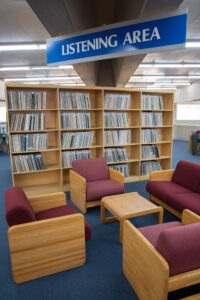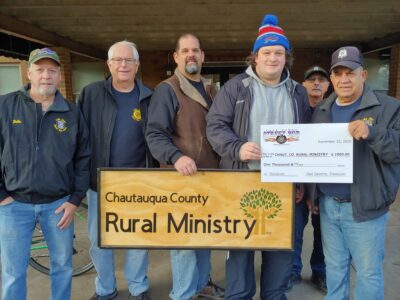Club spotlights Bulgaria’s heritage sites
The second regular meeting of the 2025-26 season of the Fredonia Shakespeare Club was hosted at the home of Mary Croxton. President Karin S. Cockram welcomed Club members to the meeting.
After the business meeting concluded, a paper by Mary Croxton on UNESCO sites in Bulgaria that continues this year’s theme of UNESCO World Heritage sites was presented.
The United Nations Educational Scientific and Cultural organizations (UNESCO) has designated 1248 World Heritage Sites.
Bulgaria has nine World Heritage Sites. It is important to understand the history of Thrace, an area of land in Europe that includes parts of Bulgaria, Greece, and Turkey to understand The Madara Horseman, a world heritage site.
The ancient peoples of Thrace, called Thracians, were known for their warrior culture, with Thracian soldiers being fierce, skilled horsemen and mercenaries highly sought after by Greek and Roman armies. This history may explain the Madara Horseman relief. The Madara Horseman is located in Bulgaria and is a unique relief on the side of a mountain. The Madara Rider represents the figure of a knight triumphing over a lion carved into a 100- meter- high cliff. Madara was the principal sacred place of the First Bulgarian Empire before Bulgaria’s conversion to Christianity in the 9th century. The inscriptions beside the sculpture tell of events that occurred between AD 705 and 801 when the Khans reigned. The relief is 3.1 meters wide and 2.6 meters high. There is no parallel in Europe to this relief in the rock face. Thus, it fits the criterion for a World Heritage Site.
The Rila Monastery is a UNESCO site. It is located in Bulgaria in the Rila Mountains. The monastery was founded in the 10th century by St. John of Rila, a hermit canonized by the Eastern Orthodox Church. John lived in a cave that is a hike from the current monastery. His students actually built a building so they could study near the hermit’s cave. The site was transformed into a monastic complex which played an important role in the spiritual and social life of medieval Bulgaria. The complex was partially rebuilt because of a fire between 1834 and 1862. The Church of the Nativity of the Virgin is a highlight of the monastery, featuring soaring domes and intricate frescoes on its exterior and interior walls. These frescoes depict biblical scenes, saints’ lives, and judgment day, with hell at the bottom, earth in the middle, and heaven at the top. The frescos were made for the people who did not read. The architecture is stunning, including the distinctive striped arcades, colorful external frescoes, and intricate wood carvings. There is a mix of architectural styles that blend Byzantine, Bulgarian National Revival, and Ottoman influences.
The four-story residential part of the complex consists of 300 chambers, four chapels, an Abbots room, a kitchen which feed hundreds at one time, and a library housing 250 manuscripts. The exterior of the complex, with its high walls of stone and little windows, resembles a fortress more than a monastery. The museum of the Rila Monastery is particularly famous for housing Rails cross, a wooden cross made from a whole piece of wood (81�–43 cm). There are religious scenes and 650 miniature figures. Work on this piece of art lasted 12 years.
After the monastery take a hike in the mountains five lake region.
Following the very informative paper all members were treated to a delectable table of snacks provided by Croxton.



